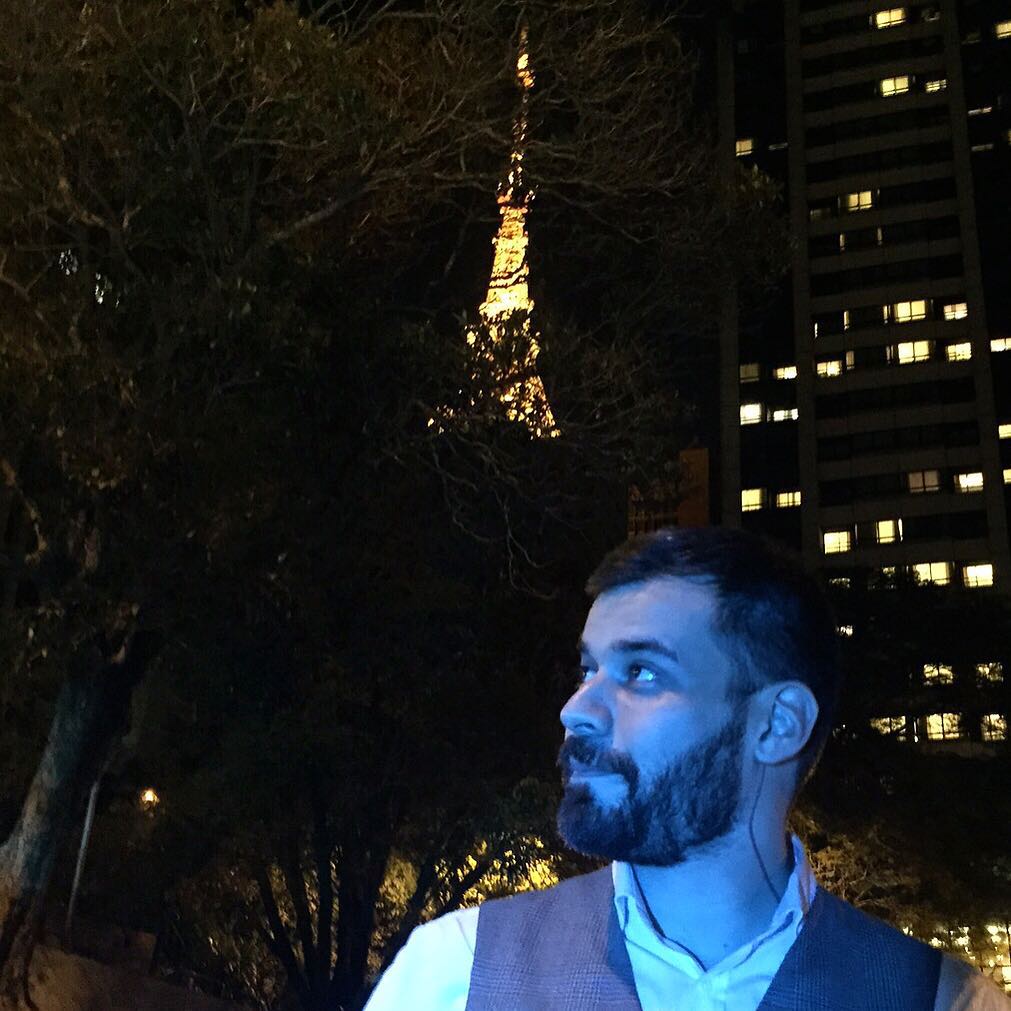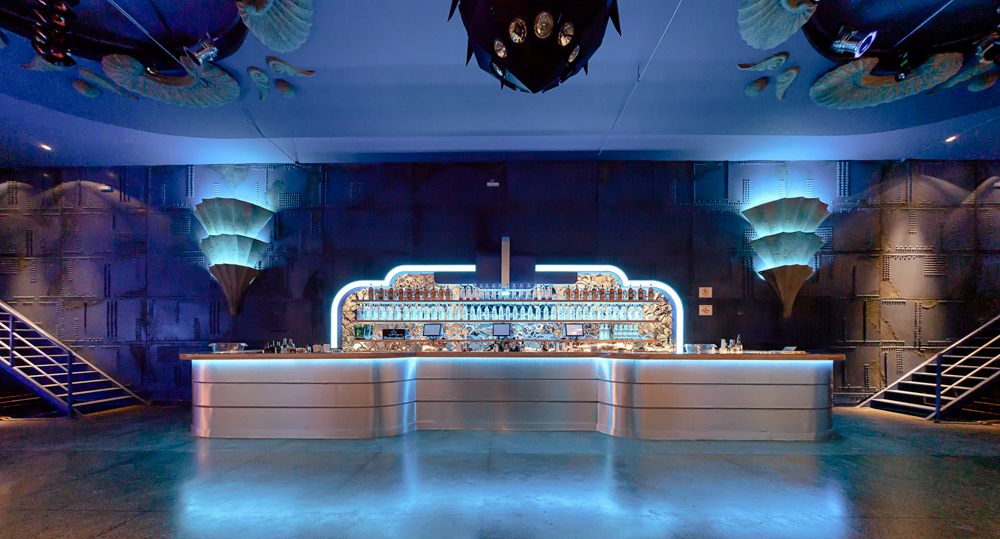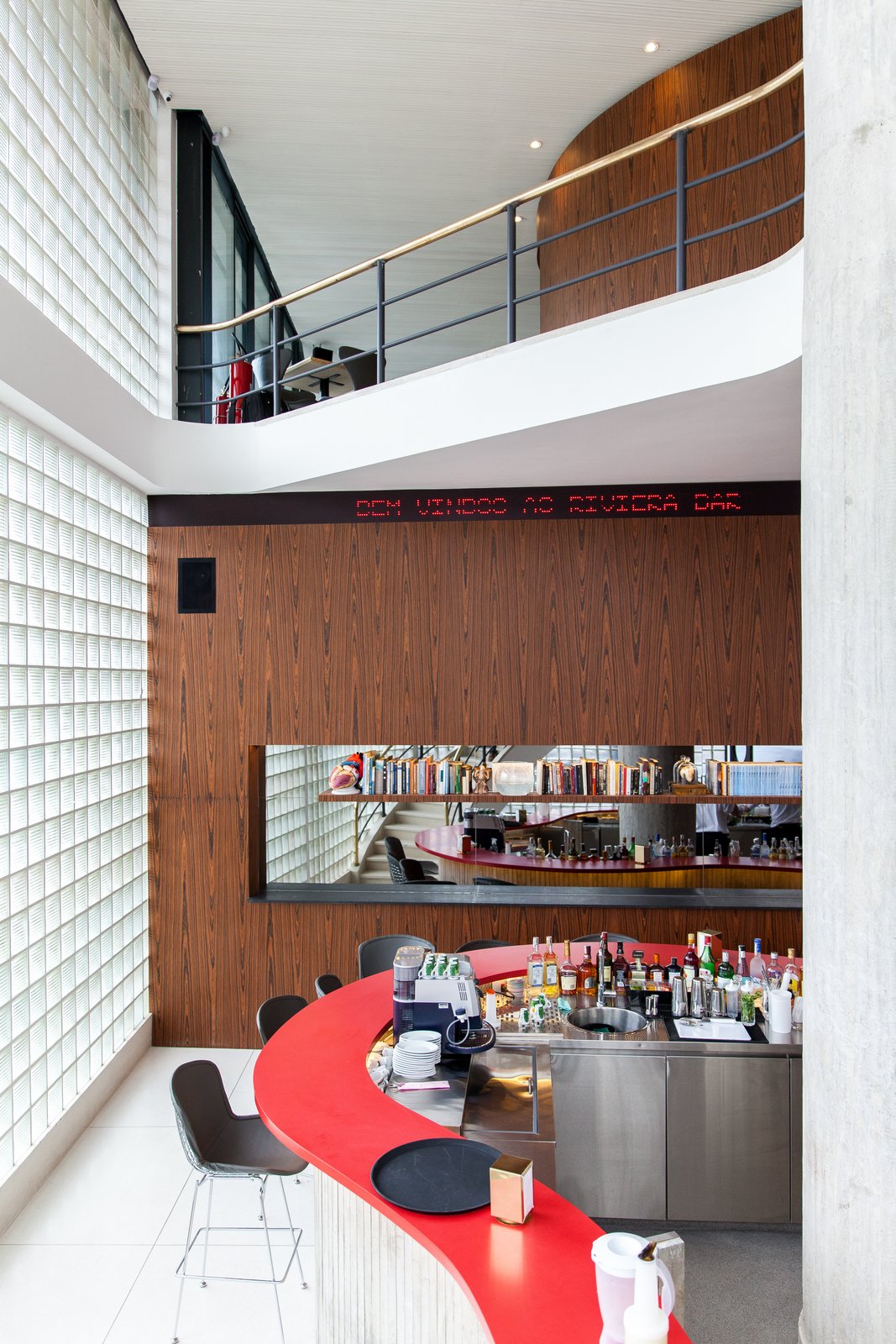 Facundo Guerra at Mirante 9
Facundo Guerra at Mirante 9
picture: Facundo’s Instagram
If you have been out in São Paulo anytime in the last decade, the chances are high that you have been to a place created and managed by Facundo Guerra, the owner and founder of Grupo Vegas. His holding started with Vegas club in 2005, in an area that later became known as Baixo Augusta (lower Augusta), the dodgiest strip of Rua Augusta. Augusta is one of São Paulo’s most iconic streets, connecting the old and somewhat poorer downtown with the fancy Jardins, crossing Avenida Paulista on the way.

Club Vegas, opened in 2005 and closed in 2012
picture by Lalo de Almeida for the New York Times
The opening of the club Vegas and the subsequent process of transformation of Baixo Augusta area into one of São Paulo’s most dense entertainment hubs rendered Facundo the unofficial title of Revitalizer of SP’s nightlife. A title he doesn’t care much for. He cares much more and very personally for the mini entertainment empire he has built since: 4 nightclubs (one of which is also doubles as concert venue) 2 bars and a cultural canter: Lions, Yacht, Cine Joia and Panam, Z Carniceria and Riviera and the most recently opened Mirante 9 .

Lions’ lobby

Lions’ dance floor

Z Carniceria

Yacht

Cine Joia
pictures: Grupo Vegas
Besides having Facundo as founder/(main) owner, all these venues feature a few common traits: they were all empty before Facundo decided to re-open them, they all have a very distinct character and style and most of them had been iconic venues of SP”s nightlife many years, sometimes decades before Facundo decided to give them their deserved second chance. His eye for detail and dedicated research work to (re) create authentic visual identities for each of the enterprises is recognizable throughout all of Facundo’s undertakings. From the interior to the choice of staff, nothing seems random. Riviera Bar, for instance, had been one of the best-known spots to find the city’s leftist artsy intelligentsia during the sixties, seventies and eighties (when Brazil was being ruled by a military junta), before closing its doors and falling into oblivion at one of SP’s busiest corners Avenida Paulista and Rua da Consolação. Riviera’s main architectonic feature, a glass bricks façade revealing a spiral staircase had been hidden for years behind ugly and humongous advertising outdoors. When Facundo decided to re-open the bar a few years ago, restoring the façade while remodeling the space internally, he invited no one less than Brazil’s top Chef: Alex Atala to be his partner in the new adventure. These days Riviera is much bigger, attracts a wider crowd and is one of SP’s best spots for a quiet afternoon drink. The food menu mixes old classics like the roast beef and cheese sandwich Royal and new items created by the chef Luciano Nardelli , who also works at Atalla”s fancier DOM restaurant. Reborn through Facundo’s visionary mind and hands, the bar and restaurant has just been featured on CNN Style as one of the world’s 17 most stunning restaurants.


Rivera Bar
pictures : Grupo Vegas
His business partners, such as Atala, are other crucial ingredients to Facundo’s success. He has partners in all of his places, while retaining at least 50% of the shares. Besides the seed money, the partners also add their experience, network and reputations to each new business. Facundo calls it “social capital” and yes, he talks conceptually about his nightlife business, which isn’t too weird when you learn that he recently completed his PhD in Political Sciences. He’s very aware of Brazil’s deep-rooted social inequality and its ramifications in Brazilian society as a whole as well as in the individual lives of the audience he caters for: mostly young, creative, trendy, predominantly white, urban middle-class and upwards.

stairs leading down to Mirante 9
picture: Ariel Martini for I Hate Flash
Parallel to the successive opening of Facundo’s enterprises in the last decade, something else was cooking up in the way paulistanos enjoy their scarce free-time: the rise of creative collectives and the reclaiming of run-down, decaying public spaces by these collectives and the city’s young inhabitants. This movement is finding friendly echoes from the city’s current administration, which is leaving his mark in the history of the city by implementing mobility measures deemed as way too radical ideas only a few years ago, such as the construction of bike lanes on the city’s main traffic arteries and experimenting with a car-free Sunday at Avenida Paulista, the epicentre of São Paulo’s economic life. The two phenomena now collide in the opening, just last month, of Mirante 9 (de julho). The space used to be a belvedere (mirante) gallery “crushed” in between a tunnel of Avenida 9 de Julho (underneath), a viaduct (above) and MASP, one of São Paulo’s most distinct postcards, uphill. During several decades the gallery had been boarded, locked up and forgotten, right on a spot where thousands of cars drive by everyday, but few pedestrians dared to walk at night.
 Mirante 9, in between the tunnel and the viaduct
Mirante 9, in between the tunnel and the viaduct
picture: Ariel Martini for I Hate Flash
After years of negotiations with the City Hall, Mirante 9 re-opened as a multidisciplinary cultural center. On Grupo Vegas’ website the place is presented as: “a center in the center of everything “ referring both to its geographical and socio-historical place in the metropolis. As usual, the opening was a much-anticipated event by Facundo’s loyal customers, social network followers and beyond. The city Mayor was there, Facundo and partners were there, most of Braziel’s friends in SP were there. And everybody seemed happy to see yet another forgotten place re-open its doors and immediately being filled with one of São Paulo’s best features: its diverse and dynamic creative energy.

Opening of Mirante 9 with Facundo on the foreground
picture: Marcelo Paixão for I Hate Flash
Braziel interviewed Facundo via email, a few days after the opening of Mirante 9:
Brazilian media often refers to you as the revitalizer of São Paulo’s nightlife. How do you react to this label?
“It bothers me. First I find the word revitalization very misplaced, meaning that we are bringing life back to a space, which is now being occupied by us from the middle-class, the productive, the living…. as if the working classes, the wild ones, the drug addicts or any other king of human being who was there before my “revitalization” were zombies or walking dead men. It’s a typically paulistano word and it says a lot about Brazil’s large social differences and about the way we see lower-income classes.
In a recent interview to Trip magazine you stated that: “Brazilians businessmen have an extractive mind-set, trying to get the maximum profit in the shortest term.” You, instead, seem to have a long-term strategy of re-investing your profits into new enterprises, thereby multiplying the risks but also the chances for profit. Do you think this strategy already has followers?
“Not that I am aware of. With this strategy I also mean that there is another kind of capital besides the financial: by setting up projects whose primary goal is not profit (not that profit isn’t important, it just isn’t the main reason for my business) we’re investing in reputation, social capital, which can correspond to money, when we save in investments with marketing, with false advertising, with trying to sell our product through false campaigns or artificial attributes. It’s not me trying to look nice, when we are able to save with marketing costs because our reputation is good, we’re improving our rentability through this saving and maximising the profit, at the end of the day. It’s just a different mean to get to the same end.”
How were the discovery of Mirante and the negotiations with the City Hall for its re-opening?
“It was a slow and painful process but at the end, after 4 years of attempts, we made it and created a precedent that will facilitate the occupation of other abandoned public places by the private sector. This precedent can alleviate the city’s balance sheet, by freeing up resources to be invested in education, health care and other essential services, while providing the private sector with access to abandoned spaces, without rental fees and with low-risk fixed costs. A win-win situation.”
The research work you do before opening a new venue is impressive and you share it extensively with your audience on social networks. Do you use this exchange as a feedback tool, in order to adjust your plans to your audience’s expectations?
“Yes. Secrecy has always been important in my type of business. But I believe that a place is first built on a symbolic level, on people’s minds and their expectations. When a new venue opens, it already has its own important social network and people go there to check whether and to which extent the actual building matches the place they had imagined. It’s been working.”
How do you conciliate the extremely physical work of demolishing and rebuilding spaces with your academic work? Do you already have an academic project following your PhD?
“I want to do a post-doc. I already have the theme and the specific problem to tackle, but no time. I’ve got other projects before the post-doc and I can deal with it later on. The academic life, generally very abstract, serves as a counterpoint to the materiality of building. They both give me comfort and act as a shelter to each other.”
Can you tell us a bit about your following projects, to be opened still in 2015? When will they open and in which stage they are now?
“A concert venue for 300 people that used to host the former Aeroanta. Aeroanta was the most emblematic rock club during the eighties, the birthplace of paulistano rock. An extended screening room inside one of São Paulo’s most traditional Cinema theatres, Belas Artes. And a travelling planetary, possibly in December. We’re in our best phase ever and the future feels sweet 😉 .”
 Facundo Guerra with Fernando Haddad, São Paulo’s Mayor, at the opening of Mirante 9
Facundo Guerra with Fernando Haddad, São Paulo’s Mayor, at the opening of Mirante 9
picture: Ariel Martini for I Hate Flash
 Mirante 9 after the opening
Mirante 9 after the opening
picture: Ariel Martini for I Hate Flash
© 2015 Braziel
Read more

















